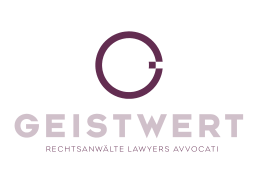Liability of the subsidiary for the turnover of the parent company in case of patent infringement
The holder of a patent is entitled to claim a reasonable license fee in case of infringement of its patent. According to sec. 153 of the Austrian Patent Act, several persons shall be jointly liable insofar as the ”same“ monetary claim arises against them.
In the most recent decision of the Austrian Supreme Court on damages for patent infringement (docket no 4Ob 3/15t of September 22.2015), the Austrian subsidiary of a Swiss parent company was sued. The subsidiary manufactured and delivered a blood coagulation factor, for which the subsidiary obtained EUR 133.197,– from the parent company. The manufacturing process was revealed to infringe the plaintiff’s patent and the subsidiary was sentenced to pay EUR 359.913,30. This corresponds to 1% of the net turnover of both parent and subsidiary company together.
The Austrian Supreme Court confirmed this calculation.
Debtor of a claim is the person that has benefitted from a patent infringement. The amount of indemnification corresponds to the value of the use, thus in general to a reasonable license fee.
Patentee is to be put into the same position as if he would have granted the infringer the use of the patent by contract and agreed upon a license fee. Whether or not the infringer made a loss or a profit is of no relevance.
A license fee usually covers all types of usages (manufacturing, distribution, use) and consequently is to be paid for any infringing object once. Several infringers are jointly liable, even in the case of definable causal contributions.
A reasonable patentee would only grant a license to a number of companies which together contribute to the use of the patent if he would obtain royalties for the entire use. The patentee would never accept a cooperation of companies, if only one of these would pay royalties for its defined part of the use, while the other companies would not pay any fees. In such a case, the patentee could request each company to ensure that the others pay their part of the royalties or that one company pays the entire amount for all companies. Consequently, it is also reasonable to assume that every company which benefits from the infringing exploitation of a patent is liable for the entire remuneration.
The Supreme Court consequently held that the subsidiary is liable also for the adequate compensation for turnover of the parent company, even if that was made abroad where no patent protection existed.
Incidentally: A license fee of 1 % might seem inadequate for a pharmaceutical, taking into account that the average license fees for blood coagulation factors in 2012 amounted to 5.6%: The low percentage is justified by the fact that (a) the patented process had to be combined with another process, (b) the parent company (theoretically) could have transferred the production abroad, and (c) the possible invalidity of the patent.
